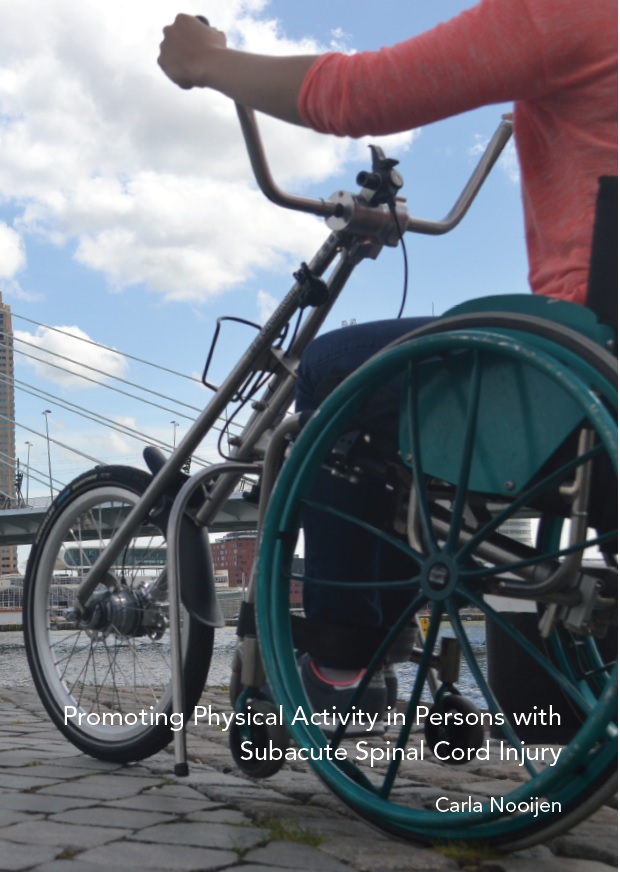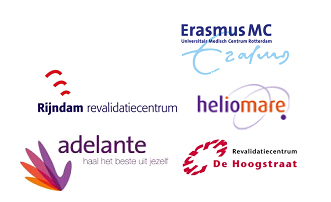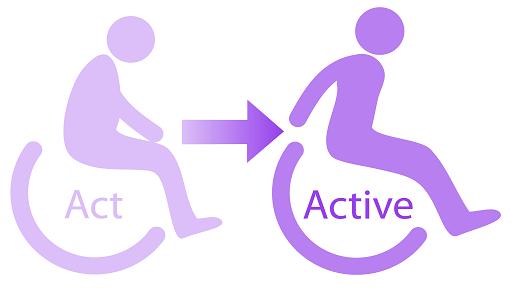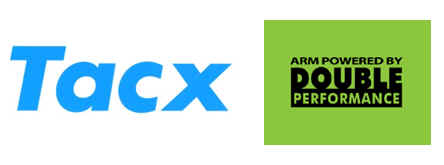Promoting Physical Activity in Persons with Subacute Spinal Cord Injury
 Carla
Nooijen, MSc (Researcher)
Carla
Nooijen, MSc (Researcher)

Rita van den Berg-Emons, PhD (Project leader)
Henk Stam, MD, PhD
Michael Bergen, MD, PhD
Tebbe Sluis, MD
Linda Valent, PhD

On October 14, 2015 Carla Nooijen will defend her dissertation entitled:
Promoting Physical Activity in Persons with Subacute Spinal Cord Injury
SUMMARY
Persons with
spinal cord injury (SCI) in inpatient rehabilitation are physically active
during therapy sessions. However, after discharge from inpatient
rehabilitation, daily physical activity levels are known to decline to a level
that is severely low compared to the general population and also low compared
to persons with other chronic diseases. More
physical activity in persons with SCI has been found to reduce the risk of
cardiovascular disease, prevent or reduce secondary conditions, and improve
physical fitness and quality of life. During
the first months after SCI, persons establish a new routine and therefore this
period might be critical to introduce and encourage new habits that
incorporate physical activity. The
current thesis focuses on the promotion of physical activity in persons with
subacute SCI.
The main objective of this thesis was to evaluate the added value of a behavioral intervention, on top of regular rehabilitation and handcycle training, on physical activity in persons with subacute SCI. Additionally, the intervention effects on secondary outcomes as health, participation and quality of life were studied and working mechanisms of the behavioral intervention evaluated. For further insight on the promotion of physical activity in persons with subacute SCI we additionally explored handcycle training feasibility during inpatient rehabilitation. Furthermore, baseline levels of exercise self-efficacy and fatigue were described and relations with demographic- and lesion characteristics were assessed.
The
introductory Chapter 1 describes background information concerning SCI,
secondary conditions, physical capacity, physical activity, and interventions
to promote physical activity. A short description of Act-Active and the
Umbrella project is provided. The chapter concludes with the aims and outline
of this thesis.
Chapter 2 describes the longitudinal relation between objectively measured
physical activity, and physical fitness and lipid profile in persons with
subacute SCI. An increase in physical activity level was significantly related
to an increase in physical capacity as measured during a maximal exercise
test. Furthermore, an increase in physical activity level favorably impacted
lipid profile. The results indicate that a more active lifestyle decreases the
risk of cardiovascular disease for persons with subacute SCI.
The study described in chapter 3 estimates the prevalence of fatigue in
persons with subacute SCI. Fatigue was prevalent in 31% of the participants,
compared to 18% in the general population. Those with incomplete lesions seem
to be at higher risk for fatigue. Furthermore, lower aerobic capacity tended
to be related to more fatigue. It was concluded that fatigue is of concern in
persons with subacute SCI, and because fatigue is known to persist among
persons with SCI, interventions reducing fatigue seem necessary.
Chapter
4
describes the psychometric properties of the Dutch version of the exercise
self-efficacy scale. The results support the use of the questionnaire as a
reliable and valid measure for exercise self-efficacy. In chapter 5 this
questionnaire was used to describe exercise self-efficacy and to assess
subgroup differences in persons with subacute SCI.
Persons with tetraplegia were found to have lower exercise
self-efficacy, indicating that this subgroup might benefit from extra
attention in promoting physical activity.
In chapter 6 feasibility and physical capacity results of handcycle training during inpatient rehabilitation are described. Overall, handcycle training during inpatient rehabilitation in persons with SCI was feasible except for training frequency. Persons with complete lesions demonstrated lower training feasibility. Most participants were satisfied with the handcycle training. Since the improvements in physical capacity were larger than those known to occur in persons with paraplegia receiving only regular rehabilitation, the results suggest that the addition of handcycle training may result in larger increases in physical capacity compared to regular rehabilitation only.
Chapters
7 to 9
describe the added value of a behavioral intervention promoting an
active lifestyle after discharge from inpatient rehabilitation, on top of
regular rehabilitation and handcycle training, in persons with subacute SCI.
Chapter 7 describes the primary results on objectively measured
physical
activity.
The behavioral intervention was effective in
eliciting a behavioral change toward a more active lifestyle among persons
with subacute SCI. Addition of the behavioral intervention resulted in 50%
more wheeled physical activity half year after discharge from inpatient
rehabilitation as well as continuation of the more active lifestyle up to one
year after discharge. In chapter 8
the
added value of the behavioral intervention on health, participation and
quality of life is described. The
addition of the behavioral intervention resulted in a more favorable lipid
profile, lower diastolic blood pressure and higher participation one year
after discharge from inpatient rehabilitation. Furthermore, there seemed to be
an intervention effect on peak oxygen uptake and BMI. Perceptions of general
health seemed to be lower after the intervention, while other domains of
health-related quality of life did not seem to be affected by the behavioral
intervention. As described in chapter 9, there
was not one factor found to be a strong mediator but multiple parameters
partly explained the effect of the behavioral intervention on physical
activity. Pro-active coping, exercise self-efficacy, pain disability and
helplessness are important concepts in interventions promoting physical
activity in persons with subacute SCI. Based on all results of the randomized
controlled trial we advise to add a behavioral intervention, on top of
handcycle training, to regular rehabilitation.
Finally, chapter 10 contains the general discussion of this thesis. This chapter describes the main findings, results interpretation and literature perspective. Methodological considerations are addressed. Furthermore, the chapter describes clinical implications and directions and recommendations for future research.

Read more about this project and the other SCI projects in Rotterdam in the newsletter of January 2012.
Publications
-
A more active lifestyle in persons with a recent spinal cord injury benefits physical fitness and health. Nooijen CFJ, de Groot S, Postma K, Bergen MP, Stam HJ, Bussmann JBJ, van den Berg-Emons HJG. Spinal Cord. 2012; 50(4): 320-3.
-
Exercise self-efficacy in persons with spinal cord injury: Psychometric properties of the Dutch translation of the Exercise Self-Efficacy Scale. Nooijen CF, Post MW, Spijkerman DC, Bergen MP, Stam HJ, van den Berg-Emons RJ. J Rehabil Med. 2013; 45(4): 347-50.
-
Feasibility of handcycle training during inpatient rehabilitation in persons with spinal cord injury. Nooijen CF, van den Brand IL, Ter Horst P, Wynants M, Valent LJ, Stam HJ, van den Berg-Emons RJ, Act-Active research group. Arch Phys Med Rehabil. 2015. Accepted.
-
Fatigue in persons with subacute spinal cord injury who are dependent on a manual wheelchair. Nooijen CF, Vogels S, Bongers-Janssen HM, Bergen MP, Stam HJ, van den Berg-Emons HJ, Act-Active Research Group. Spinal Cord 2015. Accepted.

|
|
|
 |